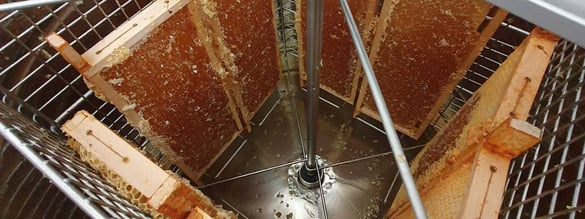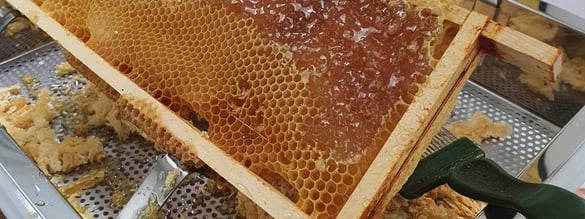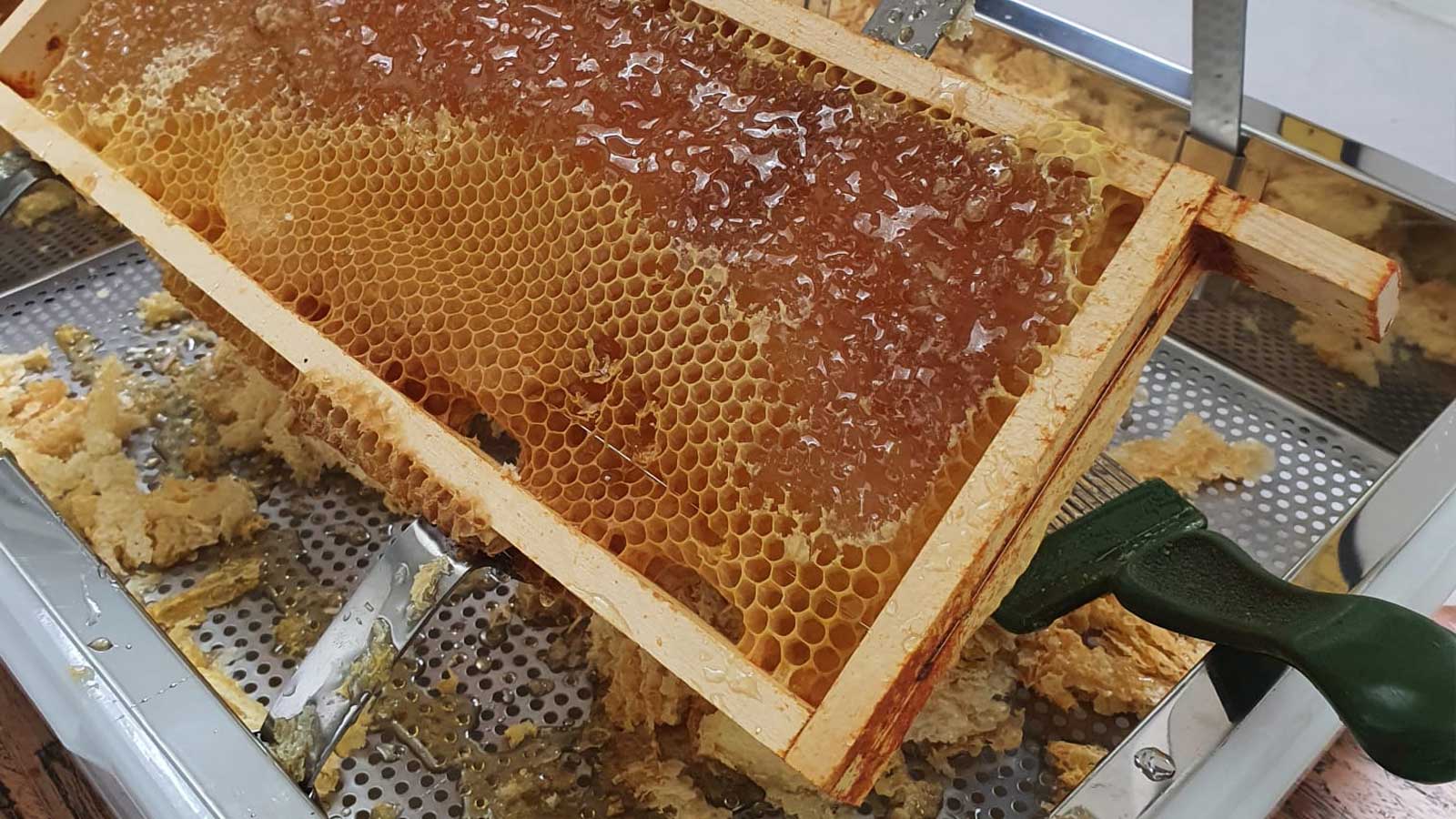Summer is over! This means that our beekeeper Jessica from Liquid Nature brings the honey yield from our hive like every year. Liquid Nature harvests the honey at the end of the bee season. But why during this period? In the spring, the bee colonies need sufficient nutrition to grow into an adult bee colony. In this period, a new young bee colony may also arise from the bee colony.
Honiey harvest
Liquid Nature only harvests part of the honey harvest. Bees need the honey as a winter supply. The beekeeper estimates how much honey is available at the end of the bee season. The honey is harvested on the basis of this quantity.
After harvesting the honey you can 'sling' it. The honey extractor rotates and the honey is ejected from the cells of the comb by centrifugal force. The honey sinks to the bottom of the pendulum. After swinging, the honey is tapped to be further sieved and skimmed.

Taste of the honey
The taste of the honey depends on the plants or flowers from which the bees get the nectar. Due to the late harvest in July or August, Liquid Nature's honey is generally multifloral instead of monofloral. This means that the honey comes from several types of flowers instead of one type of flower. Our beehive is in Bussum, where there are relatively many lime trees. Lime honey comes from the lime trees and has a sweet minty taste.
Milgro and the bee
Milgro feels connected to the bee as a restorer and maintainer of natural ecosystems. Since 2020, Milgro has had its own hive with bee colonies. In the same year we added the at symbol to our logo. Our hive will be managed and maintained by Liquid Nature. Yes, it's important to put the words into action!

Stay informed?









